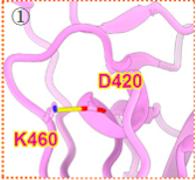If you're sick of (or with) COVID, join the club. It's endless. SARS-CoV-2, the virus that causes the disease, keeps throwing one surprise after another at us in ways that could have never been predicted early in the pandemic. At that time, we naively believed that herd immunity, vaccination, or both, might eventually rid the world of this unprecedented pathogen, but the virus had other ideas. Don't blame the scientists. Blame the virus.
The naïveté of early predictions became obvious as we marched through the Greek alphabet and then ran smack into Delta in mid-2021. Deaths and hospitalizations, both of which had been declining, shot upward. The Delta variant was estimated to be 80-90% more contagious than the Alpha variant and also caused more severe disease. The term "breakthrough infection" was first used at this time. Some scientists at that time predicted that the Delta variant would be as bad as SARS-CoV-2 would get.
Wrong.
2022 - Delta summarily displaces by Omicron
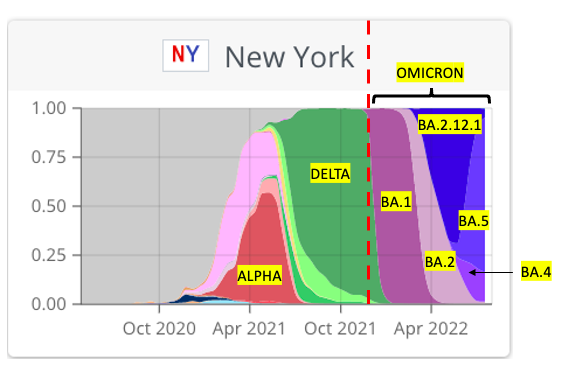
Figure 1. Chronology of predominant COVID variants and subvariants in New York State (1). The red hatched line marks the beginning of the "Omicron Age." Note how each subvariant quickly displaces its predecessor. Figure modified from CoVariants graph.
Anyone looking forward to the end of Delta got a bittersweet surprise. Omicron, which is supposedly less lethal than Delta (although this has been disputed), broke all the rules. It is so genetically unstable that it continues to spit out subvariants at a horrifying rate, each of which is more transmissible than the one before. There are now at least six sequenced subvariants of concern, which is unprecedented. Worse still, even though these subvariants all belong to the Omicron family, you'd think they'd never met.
For example, the first Omicron subvariant, B.1, was a bit more transmissible Delta but seemed to be otherwise unremarkable. But mutation continued, this time within the Omicron family itself (Figure 1). And there are some disturbing differences in the behavior of these Omicron subvariants.
BA.5, which (at least for now) is the predominant circulating subvariant seems to cause more inflammation than other subvariants. Perhaps more troubling is that any immunity that may have resulted from earlier subvariants is "ignored" by BA.5. Even people who were infected by B.1 or B.2 a few months earlier could become infected by BA.5, theoretically even at the same time (2).
Centaurus - A little change goes a long way
Now we have to be on the lookout for BA.2.75, aka Centaurus. In India, it is now taking over from the previous "champion" BA.5. Why is BA.2.75 special? It doesn't yet appear to be any more or less dangerous than the other Omicrons, but a look at how it formed offers a great example of how even a minuscule change can allow Covid to mutate to generate more-contagious species with different properties.
You can see in Figure 2 that in India, Centaurus (a name that doesn't make any more sense than BA.2.75, really) is well on its way to relegating BA.4/5 (3) to the scrap heap of virus history. It's a pretty safe bet that Centaurus will displace BA.5, probably sooner rather than later, and become the dominant subvariant in India. It's probable, that it will, like other more contagious subvariants have done, make its way around the world.
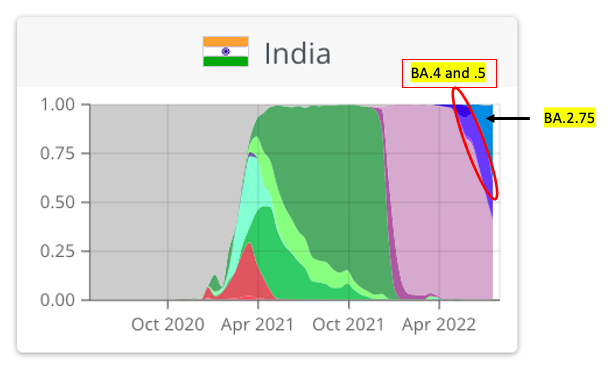
Figure 2. Timeline of variants and subvariants in India. BA.4 and BA.5 are normally grouped together because they are virtually indistinguishable.
Although at this time there is no evidence that Centaurus is more dangerous, it is a walking chemistry lesson – a single amino acid mutation can enable it to avoid antibodies. This is a quintessential example of how very simple organic chemistry ultimately controls biochemistry, and thus, biology. How can a seemingly inconsequential change in one of the 1,273 amino acids that make up the Covid spike protein have a profound impact on the properties of the virus?
Don't let this scare you
Below is a miniature screenshot (Figure 3) from the Subvariants site. Although you can't really see it, across the top are 13 variants and subvariants in more or less chronological order. Each colored box represents a mutation at one of the 1,273 positions in the spike protein. It cannot be more obvious that the Omicron subvariants are highly mutated compared to all other variants (4). There is nothing else you need (or want) to understand from this page. It is almost a given that Omicron's wicked ability to mutate is why these subvariants keep popping up. And once a subvariant appears, Darwinian evolution comes into play, selecting for those that are the most “fit.”
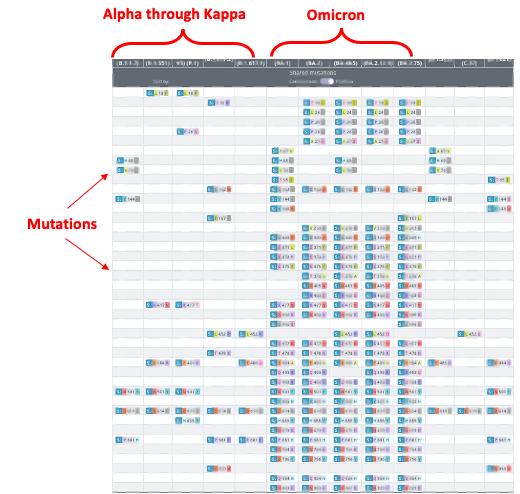
Figure 3. Source: CoVariants Shared Mutations
In Figure 4 I've highlighted a single mutation – asparagine to lysine – at position 460, which is part of the receptor binding domain (RBD), a crucial portion of SARS-CoV-2 that governs how the virus attaches to the ACE2 receptor in cells. The impact of this simple change is fascinating.
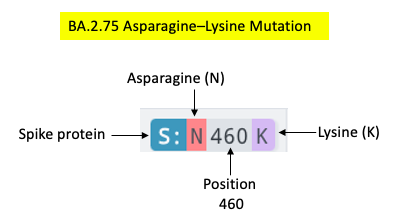
Figure 4. A seemingly innocuous mutation is anything but.
Organic Chemistry 101. Please don't stop here! It's really cool.
Wait! Did I hear the term “organic chemistry?” We all know what that means! Another installment in the devilishly popular Dreaded Chemistry Lesson From Hell®

Let's welcome back Steve (left) and Irving, our long-time hosts of the DCLFH®. Readers have been asking "how did they assume this ghastly role?" No, they know nothing about chemistry or science, which made them uniquely qualified to be producers of the Dr. Oz show, a hell of a different kind. Is their former profession a contributing factor to their permanent residence in the Hot Time Hotel? You tell me.
There are a number of organic molecules that are basic (in the acid-base sense) – they react with acids to form salts. One very common organic base is an amine. Likewise, there are also organic molecules that are acidic; these are called carboxylic acids. Of the 20 amino acids, only two are acidic (aspartic acid and glutamic acid) and three are basic (lysine, arginine, and histidine). This is why the N ---> K mutation is important. Because in the three-dimensional structure of the spike protein position 460 just happens to be in the vicinity of a carboxylic acid – aspartic acid (D) at position 420 (Figure 5), giving them the opportunity to interact.
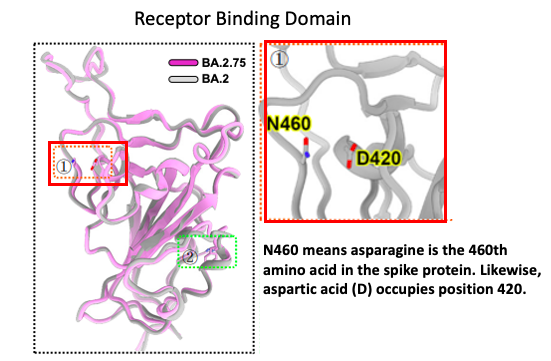
Figure 5. A portion of the RBD of a B.2 subvariant. Note the proximity of asparagine (N) 460 and aspartic acid (D) 420. Source: "Characterizations of enhanced infectivity and antibody evasion of Omicron BA.2.75" bioRxiv, doi: https://doi.org/10.1101/2022.07.18.500332.
One oxygen atom changes everything
Back to Organic 101. Assuming you're not gargling with molten lava at this point, please bear with me for a little while longer.
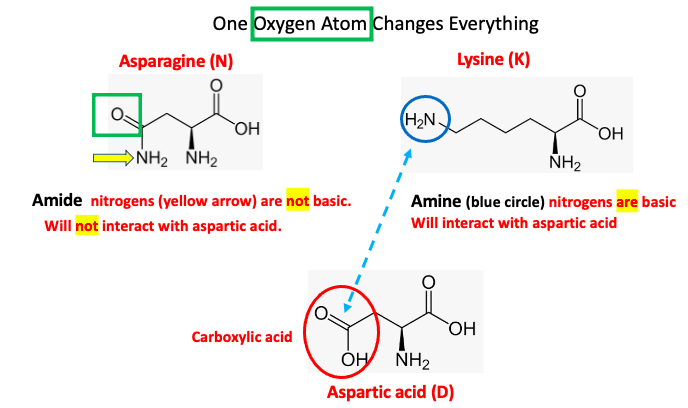
Figure 6. A little organic chemistry. Amides, such as asparagine are not basic and cannot form a salt bridge with aspartic acid
For reasons you either already know or don't want to, amides (e.g., asparagine, left), which look like amines but differ by an adjacent carbon-oxygen double bond (green square], are examples of non-basic (5) nitrogen-containing organic molecules. As such, they do not interact with nearby carboxylic acids in proteins. Conversely, amines, (lysine, right) are basic, and in this case, interact with a nearby aspartic acid (D420) forming a "salt bridge" – an electrostatic bond between the two amino acids (positive attracts negative).
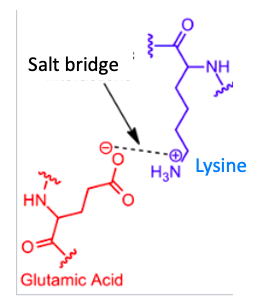
Figure 7. Example of a salt bridge in proteins. The glutamic acid, shown in its ionized (negative charge) form, is attracted to the positive charge of the adjacent lysine molecule. (Although glutamic acid is shown in this diagram this is irrelevant; aspartic acid, which is found in Centaurus, behaves in the same way. Image Modified from Wikipedia
The Grand Finale
At this point, you may be asking yourself any number of questions, including:
- Why the hell have I wasted 15 minutes and gotten a migraine reading this wretched article?
- When, if ever, will Bloom get to the point?
- Will it be worth the torture I have gone through?
I'd like to think that it was worth it. But for this to be true, I need to (finally) reveal why all of this is relevant. The science of the SARS-CoV-2 receptor binding site is evolving, but it is known that the RBD is responsible for both cell entry and also immune evasion. The N460K mutation impacts the latter.
N460K is the major mutation that caused this antibody evasion
Cao, et.al., "Characterizations of enhanced infectivity and antibody evasion of Omicron BA.2.75" bioRxiv, doi: https://doi.org/10.1101/2022.07.18.500332. This article is a preprint and is not peer-reviewed.
In other words, the simple salt bridge of the N460K mutant that enables Centaurus to evade immunity (Figure 8) can only form because lysine has replaced asparagine – a single mutation that removed one oxygen atom, changing the chemistry at this site. Simple organic chemistry, profound results.
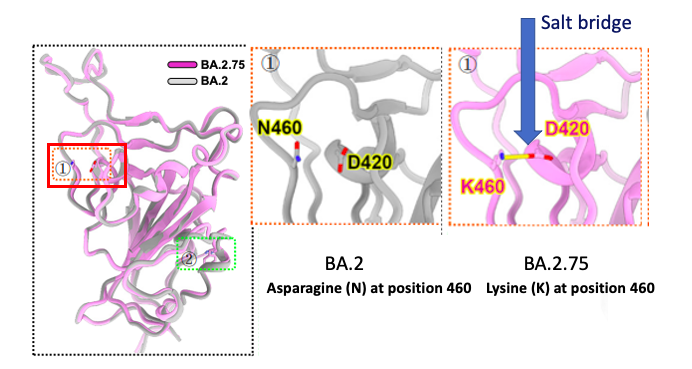
Figure 8. The N460K mutation and its impact on salt bridge formation in BA.27.5. Source: "Characterizations of enhanced infectivity and antibody evasion of Omicron BA.2.75" bioRxiv, doi: https://doi.org/10.1101/2022.07.18.500332.
A single mutation, some simple chemistry, and we have yet another subvariant to deal with. Will this ever end? Don't bet the house on it.
Disclaimer
I've lied. There are actually two more important mutations in Centaurus. They occur in a different region of the spike, and I can promise that you don't want to read about them. That said, these mutations help hold the spike protein more tightly together, which probably affects its ability to bind more tightly to the ACE2 receptor. But if you want to know about pi-pi stacking knock yourself out.
NOTES:
(1) I selected New York State only because I live here. Most other states show the same pattern.
(2) It is theoretically possible to catch both BA.1 and BA.5 at the same time this is highly unlikely because BA.1 was long gone by the time BA.5 took over.
(3) BA.4 and BA.5 are typically grouped together because they are almost identical.
(4) The mutation of Omicron is not a linear process. The subvariants seemed to have developed independently; they do not share a common ancestor.
(5) Just to shut up all the chemists who might write to complain, amides are very weakly basic, non-basic for the purposes of this article.
